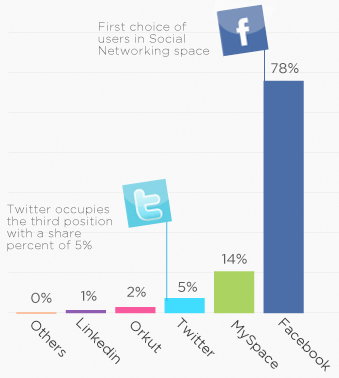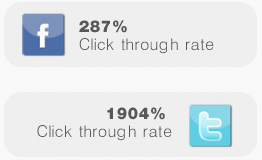
Actions speak louder than words. And as such, we have the responsibility to lead desirable and mutually beneficial actions through meaning engagement. It’s difficult to do so however, when we focus our efforts on cultivating communities where success is derived by their respective populations. From views and impressions to Likes and Retweets to the count of our Friends, Fans and Followers (3F’s), we miss sight of what’s truly important, connections, outcomes, and the experiences we define and nurture.
Focusing on numbers is only part of the story in this intricate production we call social media. In the world of storytelling and audience engagement, the audience is represented by not only the people we draw into the theater, but also those we do not. And for those we attract, we must define the intended experiences and desirable outcomes we wish to produce. Doing so will set the stage for consumers to take action and also share experiences across their social and interest graphs. We’re then introduced to important social touchpoints and the metrics that ultimately reveal the effect of our engagement and also how we can improve experiences and outcomes over time.
A Click to Action
Design the preferred outcome and experience and reverse engineer it in order to bring it to life. To do so, we have to realize that not all friends, followers, fans or views are created equally. And, we must also recognize that the prevailing cultures and supporting behaviors in each network dictate very different results. To trigger the social effect, an understanding of network performance is fundamentally essential to the architecture of discreet initiatives within each engagement strategy.
For example, let’s take a look at Facebook Likes. The average “liker” has 2.4x the amount of friends than that of a typical Facebook user, showing the tremendous opportunity to reach “trend setters” aka tastemakers who can help achieve the greatest reach and distribution of content and more importantly, your story. According to Facebook, the Likers are more engaged, active, and connected than the general population of the global social network. At the same time, they’re genuinely interested in exploring new content. As a result, they click on 5.3x the links than that of the typical Facebook user.
Social Commerce
In the world of social commerce, the connected consumer is at the center of influence. Ensuring beneficial experiences and empowering them with sharing mechanisms ensure that their reach is maximized. Again, networks and the people who populate them, engender varying results. Online ticketing provider Eventbrite released the results of a recent survey that found Facebook sharing to outperform Twitter by as much as 6x.

According to Eventbrite, Facebook shares led the pack, generating an average of $2.52 from 11 referrals. Just behind Facebook, sharing via email came in second at $2.34. However, the delta between Facebook and email and the rest of the referring sources is vast. LinkedIn shares were valued at $0.90 and Tweets were worth only $0.43.
Media
Likers form an “always on” audience. The average Liker on a news site, for instance, is 34 whereas the media age of a newspaper subscriber is 54. If we examine the effects of Likers on the media industry, we can get a clearer picture of their influence. In fact, many publishers are reporting overwhelming results after introducing the social sharing buttons, empowering viewers to share stories across their social graph with one click.
Sample reports according to Facebook:
ABC News is up over 190% as a result of adding social plugins
Gawker claims an surge of over 200%
TypePad reports increases over 200%
Sporting News is up by 500%
NBA.com states that Facebook is now the number 2 referral source
Gawker claims an surge of over 200%
TypePad reports increases over 200%
Sporting News is up by 500%
NBA.com states that Facebook is now the number 2 referral source
Publishes also report that increased engagement is an organic byproduct of a social referral ecosystem. At NHL.com, Facebook visitors are reading 92% more articles, spending 85% more time on-site, viewing 86% more videos, and generating 36% more visits than visitors from other sites.
What are the best ways to reach these people? According to Facebook, it starts with…
1. Implement social plugins, beginning with the Like button. When a person clicks Like, it (1) publishes a story to their friends with a link back to your content, (2) adds the article to the reader’s profile, and (3) makes the article discoverable through search on Facebook.
2. Optimize the Like button. By showing friends’ faces and placing the button near engaging content (but avoiding visual clutter with plenty of white space), clickthrough rates improve by 3-5x according to Facebook.
3. Publish back. Publishing engaging stories or status updates (things that are emotional, provocative, related to sporting events or even simple questions) increase on-Page engagement by 1.3-3x.
4. Integrate the Activity Feed or Recommendations plugins. Highlighting most popular content on your site leads people to view more articles. Those who click on the Activity Feed plugin in particular generate 4x as many page views as the average media site viewer. Place it above the fold on your home page and at the bottom of each article for maximum engagement.
5. Use the Live Stream to engage users during live events. The live stream box can serve as a way to reach your audience, facilitate sharing of your content, and get them involved in what you’re streaming, be it an interview, conference, or other type of event.
A Tweet to Action
One of the greatest challenges any brand will experience in Twitter is the very thing that makes it so special, the ability to earn attention in real-time. Twitter, by intention, is fleeting. We are constantly sharing, engaging, and consuming micro-sized portions at a constant pace. To connect here, requires creativity,relevance, value, and a sense of reward.
Social media analytics and monitoring service Sysomos studied over 1.2 billion tweets over the course of two months and found that Twitter is indeed a broadcast system rather than a social network. As part of itsEngagement Report,

When examining the idea of triggering a click to action, Sysomos discovered that only 29% of Tweets generate a reaction, usually in the form of a reply or ReTweet, which was the overwhelming majority of all replies at 19.3% or 72 million. Of those RTs, 92.4% happen within the first hour dropping to 1.63% in the second hour and almost cease completely in the third hour with .94%. On Twitter, we are competing for the moment.

Like RTs, the bulk of replies occur within the first hour as well. In the first hour, the average replies numbered at 96.9% within hour one and only .88% in hour two.
Sysomos also reviewed the depth of conversation threads on Twitter. The data fueled the idea of Twitter serving the role of broadcast network over a conversational platform. The extent of dialog is measured at three levels deep. Of all of the Tweets that generated a reply, 85% received one reply and 10.7% witnessed a reply to the original reply. Only 1.53% of Tweets experienced a reply to the reply of an original Tweet.
Does this information from Sysomos lead us to assume that Twitter’s role in our click to action programs is less important than expected? Not at all.
Influence on decisions, actions, referrals, and referring sources are dramatically leaning toward social. When it comes to click-through rates, Twitter crushes Facebook according to SocialTwist, makers of the Tell-a-Friend widget that lets users share content through social media. The company found that click-through rates via social networks outperformed links shared in email and blogs.

As we reviewed earlier, Facebook is by far, the preferred service for sharing representing over 78% of all SocialTwist shares.

However, here’s the promise for Twitter. Of all social networks, Twitter is the most effective tool for triggering coveted click-throughs. Whether Tweets are organic or Promoted, Twitter believes that it has “cracked the code on a new form of advertising.” At the same time, it has also cracked the code on a new type of interaction and engagement. Click-through rates on Twitter averaged 1904% while Facebook yielded 287%.

In the end, we’re measured by who we reach, the experiences we create, and the actions we inspire. This is a call for a renewed focus on people and the value they seek tied to the outcomes that impact our business. A click to action is not a transaction, it is a form of currency where individuals on all sides benefit from each and every social exchange.
No comments:
Post a Comment